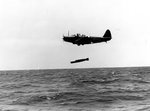Yes and this was demostrated directly in M4A3E8 v T-34/85 actions in Korea, not just new research. And I agree the offensive power of the M4 could be further increased from 76mm, to 17pdr or even 90mm. However to be fair the M4 was still not as well protected as the T-34 (not to mention Panther) which could be important in other circumstances though not in direct M4 76mm (well supplied with HVAP ammo) v T-34/85 combats in Korea, which were usually at pretty short range besides: in that case either could penetrate the other reliably, outcome usually depended who got off the first accurate shot.
Joe
M4 76mm is a good tank but it's available only after D Day and HVAP ammos also later, september, and in very few number. The M4 75mm was common in Europe also in '45.

